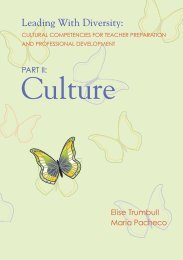School-Linked Services: Child Opportunity Zone Family Centers
School-Linked Services: Child Opportunity Zone Family Centers
School-Linked Services: Child Opportunity Zone Family Centers
You also want an ePaper? Increase the reach of your titles
YUMPU automatically turns print PDFs into web optimized ePapers that Google loves.
<strong>School</strong>-<strong>Linked</strong> <strong>Services</strong>:<br />
<strong>Child</strong> <strong>Opportunity</strong> <strong>Zone</strong> <strong>Family</strong> <strong>Centers</strong> is<br />
the first in a series of reports focused on<br />
school-linked services, family support<br />
programs, and school-family-community<br />
partnerships in Rhode Island. <strong>School</strong><br />
readiness, healthy child development, and<br />
school success are goals that can best be<br />
achieved by working across sectors.<br />
Improving outcomes for children demands<br />
that schools, families, service providers,<br />
and community leaders work together to<br />
craft comprehensive solutions to complex<br />
problems.<br />
There is increasing pressure on the<br />
public education system to monitor<br />
outcomes for children at school entry, in<br />
the fourth grade, and beyond. A school<br />
system striving for excellence is more<br />
likely to be successful when academic<br />
strategies are complemented by efforts to<br />
improve the quality of family and<br />
community life. Many children and<br />
families have complex needs that can not<br />
be met by the education system alone.<br />
<strong>School</strong>-linked service initiatives across the<br />
country are proving to be viable and<br />
encouraging vehicles to improve school<br />
success through active partnerships among<br />
schools, families, health and human<br />
service agencies, and other community<br />
resources.<br />
This series of reports will highlight<br />
promising efforts in Rhode Island that go<br />
beyond institutional boundaries in order<br />
to improve the health, safety, education,<br />
and economic well-being of families. The<br />
programs highlighted by the series have<br />
taken on the challenge of working across<br />
the health, education, and social service<br />
systems. It is hoped that the lessons<br />
learned from these innovative efforts will<br />
stimulate dialogue on how to best develop,<br />
support, and sustain programs and<br />
institutions that will improve outcomes<br />
for children and families.<br />
“<strong>School</strong>-<strong>Linked</strong> <strong>Services</strong>”<br />
A strategy to improve educational, mental<br />
health, health, and social outcomes for<br />
children and families. <strong>School</strong>-linked<br />
services connect families with a wide range<br />
of informal supports, community<br />
activities, health care and social services.<br />
“<strong>Family</strong> Center”<br />
A friendly, welcoming place in or near a<br />
school where parents and other family<br />
members can go to receive information,<br />
support, services or referrals. The program<br />
design for school-linked services often<br />
includes a family center.<br />
“<strong>Family</strong> Support”<br />
A way of working with families that builds<br />
on their strengths and interests, focuses on<br />
the healthy development of the parent as<br />
well as the child, connects families with a<br />
wide-range of informal supports and<br />
opportunities in the community, and<br />
helps families access services as needed.<br />
“<strong>School</strong>-Community-<strong>Family</strong><br />
Partnership”<br />
A strategy used to improve the educational<br />
achievement of children. <strong>School</strong>s, families,<br />
and community agencies work together to<br />
address the educational, health, social, and<br />
economic well-being of children and<br />
families. The most effective partnerships<br />
focus on results, make a commitment to<br />
shared decision-making, and allocate<br />
resources for activities that meet mutually<br />
identified needs.<br />
<strong>School</strong>-<strong>Linked</strong> <strong>Services</strong>:<br />
<strong>Child</strong> <strong>Opportunity</strong> <strong>Zone</strong><br />
<strong>Family</strong> <strong>Centers</strong><br />
Provides a rationale for<br />
school-linked services as a<br />
strategy to improve<br />
outcomes for children.<br />
Describes Rhode Island’s<br />
<strong>Child</strong> <strong>Opportunity</strong> <strong>Zone</strong><br />
(COZ) <strong>Family</strong> Center<br />
initiative.<br />
Highlights the current<br />
status of the initiative<br />
based on site visits and<br />
interviews in the 13<br />
Rhode Island<br />
communities with COZ<br />
<strong>Family</strong> <strong>Centers</strong>.<br />
Suggests program and<br />
policy implications.<br />
report overview<br />
3



